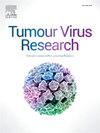Evaluating the performance of the Xpert HPV assay in detecting HPV positive cases in Morocco
IF 8.1
Q1 VIROLOGY
引用次数: 0
Abstract
Recently, the World Health Organization recommended integrating HPV testing into cervical cancer screening programs globally. This study aimed to compare the GeneXpert assay with PCR-sequencing for HPV detection and genotyping to assess the feasibility of incorporating HPV molecular testing into cervical cancer screening. A total of 1000 women aged 30 or 40 from rural and urban areas across four regions in Morocco with high sexually transmitted infection prevalence were recruited. After excluding 21 invalid tests, DNA testing on the remaining 979 samples showed an HPV prevalence of 4.0 % (39/979) by PCR and 5.0 % (49/979) by Xpert, with an overall prevalence of 5.7 % (56/979) when combining both techniques. The concordance rate between the tests was 97.5 %. Notably, the Xpert HPV assay was highly efficient in detecting HPV, with nearly all identified HPVs being high-risk oncogenic types, predominantly HPV16, 18, 31, 35, and 45.
The Xpert HPV assay has demonstrated excellent analytical performance, making it a reliable option for HPV detection in vaginal and cervical swabs. Its integration into primary cervical cancer screening programs could significantly enhance the early detection of HPV-positive cases, thereby strengthening the screening framework and potentially reducing both the incidence and mortality of cervical cancer. Future studies should focus on confirming these results and exploring the utility of this method in conjunction with other diagnostic tools such as visual inspection with acetic acid (VIA) for a comprehensive assessment of its effectiveness in real-world settings.
评估Xpert HPV检测在摩洛哥检测HPV阳性病例中的表现
最近,世界卫生组织建议将 HPV 检测纳入全球宫颈癌筛查计划。本研究旨在比较 GeneXpert 检测法与 PCR 测序法在 HPV 检测和基因分型方面的优势,以评估将 HPV 分子检测纳入宫颈癌筛查的可行性。我们从摩洛哥四个性传播感染高发地区的农村和城市地区共招募了 1000 名 30 或 40 岁的女性。在排除了 21 项无效检测后,对剩余的 979 份样本进行了 DNA 检测,结果显示 PCR 检测的 HPV 感染率为 4.0%(39/979),Xpert 检测的 HPV 感染率为 5.0%(49/979),两种技术结合检测的总感染率为 5.7%(56/979)。两种检测方法的吻合率为 97.5%。值得注意的是,Xpert HPV 检测法检测 HPV 的效率很高,几乎所有检测出的 HPV 都是高危致癌类型,主要是 HPV16、18、31、35 和 45。将其纳入宫颈癌初筛项目可大大提高 HPV 阳性病例的早期检测率,从而加强筛查框架,并有可能降低宫颈癌的发病率和死亡率。未来的研究应侧重于证实这些结果,并探索该方法与其他诊断工具(如醋酸肉眼检查(VIA))的结合使用,以全面评估其在实际环境中的有效性。
本文章由计算机程序翻译,如有差异,请以英文原文为准。
求助全文
约1分钟内获得全文
求助全文
来源期刊

Tumour Virus Research
Medicine-Infectious Diseases
CiteScore
6.50
自引率
2.30%
发文量
16
审稿时长
56 days
 求助内容:
求助内容: 应助结果提醒方式:
应助结果提醒方式:


